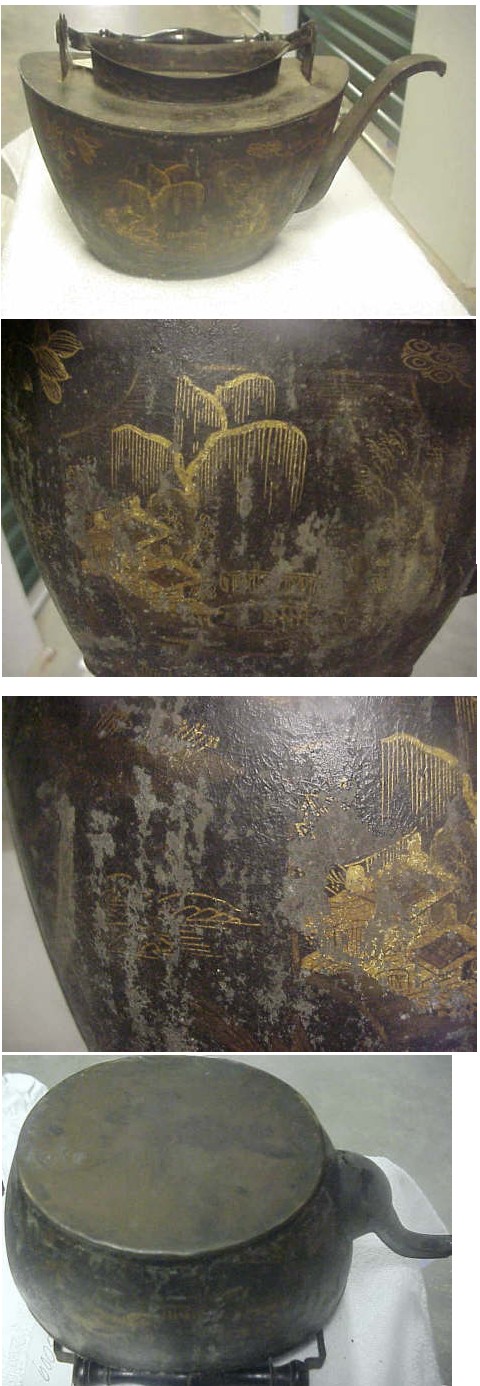
Tine and tole teapot
Toleware - or tole - i.e. painted or "japanned" tin, sometimes called "tôle peinte". Any object of japanned (varnished) tinplate and pewter. Sometimes there are English "Chinoiserie" style "japanned" toleware. Most of the toleware tends to be English - things like tea canisters and trays. The technique (as we know it today) originated in the Welsh town of Pontypool.
'Japanning' is a method of protection combined with a style of decoration, originally used in the east in India, China and Japan. Japanning can be used on a variety of surfaces; however Japanned tin goods were first produced in Pontypool, South Wales in the 1730s. The craft spread quickly to the industrial areas of the Midlands; Birmingham, Wolverhampton, Bilston and also to Usk, Monmouthshire. There, a man named Thomas Allgood was experimenting with metal plating to make it rustproof and decorative all at once. This style of decorative art spread from Europe to the United States in the 18th century, and was popular in US kitchens in the 18th and 19th centuries.
The term tôle, derived from the French tôle peinte, "painted sheet metal", is synonymous in English usage with japanning on tin, such as the tôle shades for bouilotte lamps and other candle shades, and trays and lidded canisters, in which stenciling and gilding often features, almost always on a black ground. It began as a way to prevent metal household objects from rusting, but eventually took on an aesthetic life of its own. Tole, which comes from the French term for "painted tin," is just that: a tradition of painted metal ornamentations for the home, often tinplate—and frilly and elaborate and floral in design.
Toleware in its more sober forms - decorative paintings on dark trays, urns and tea caddies - are seriously collected as antiques. They have their own literature and history, going back to 19th-century Wales and paintings done there to imitate lacquerware.
Contemporary Italian tole refers to the technique of adding decorative paint to metal and is usually made in or near Florence.
A